
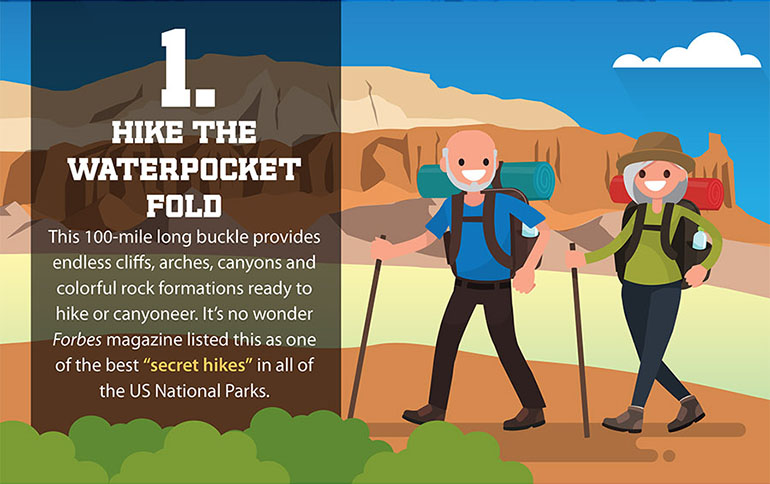
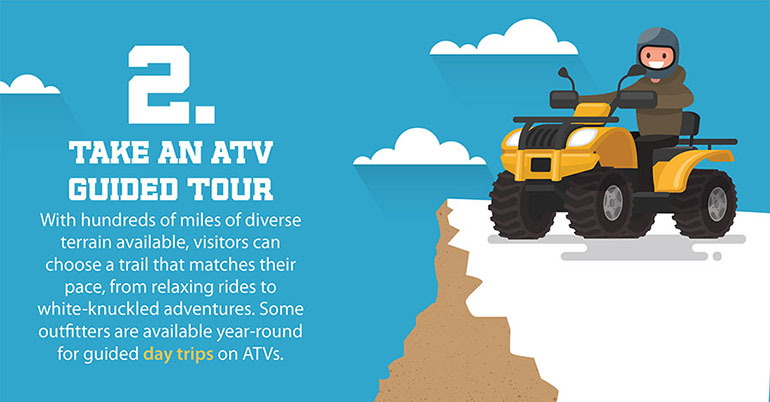

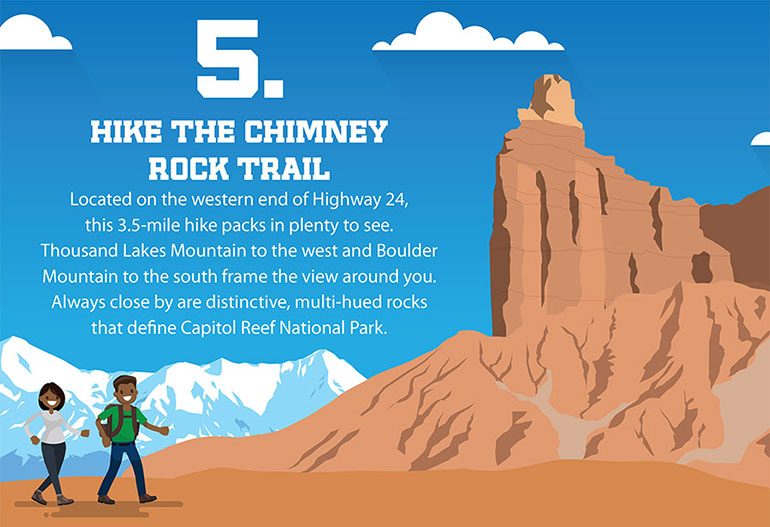
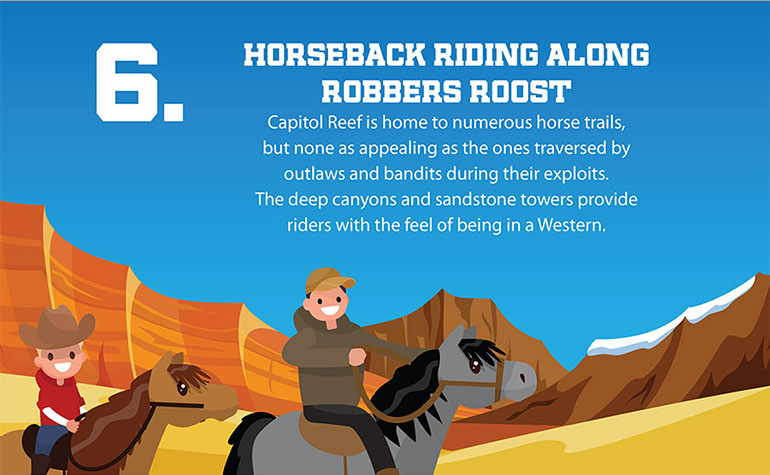


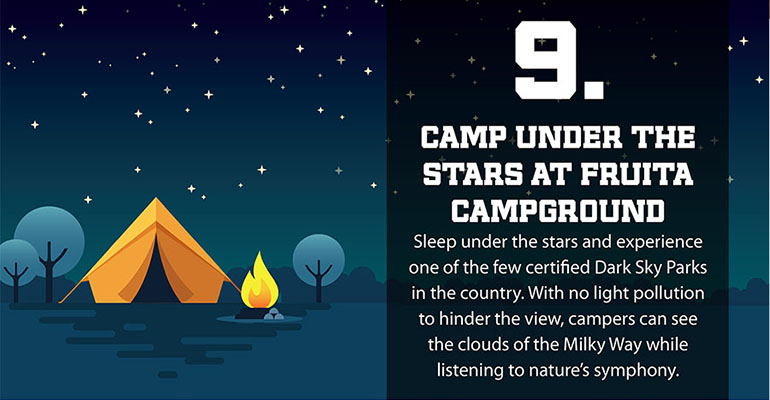

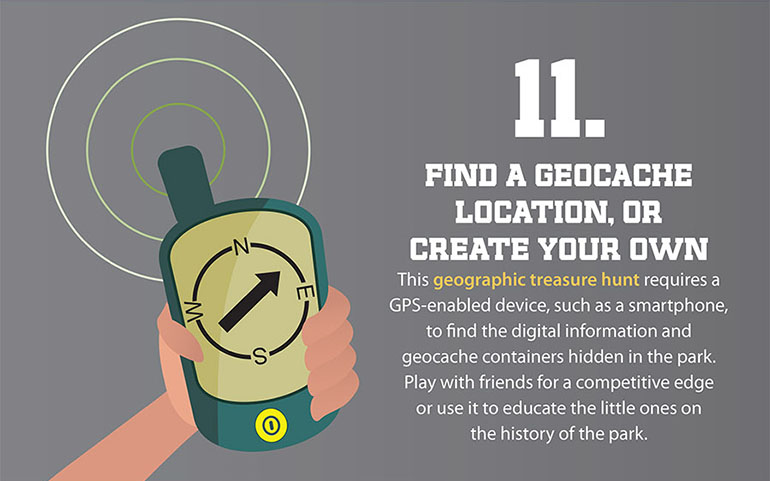
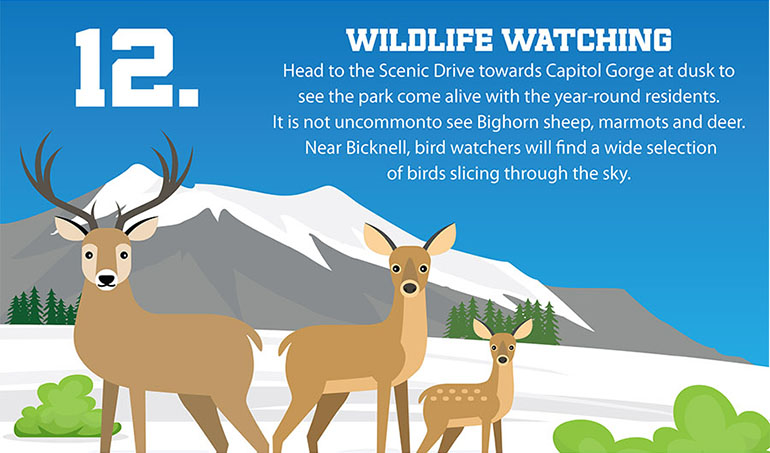
It might seem like Capitol Reef National Park is best experienced in the spring or summer, but there’s actually quite a bit to do there in the winter. Since the park includes both low-elevation desert that receive little to no snow and high-elevation areas with mountains and some snow, you’ll find there’s a variety of ways to enjoy the colder months there.
Winter in Capitol Reef is stark and uniquely beautiful. Plus, it’s much less crowded than during other seasons, so you may have the place all to yourself. And in the lower elevations, daytime temperatures are often relatively mild. Here are 12 recreational activities in Capitol Reef Country that you can enjoy this winter.
Hike the Waterpocket Fold
This 100-mile long buckle provides endless cliffs, arches, canyons and colorful rock formations ready to hike or canyoneer. It’s no wonder Forbes magazine listed this as one of the best “secret hikes” in all of the US National Parks.
Take an ATV Guided Tour
With hundred of miles of diverse terrain available, visitors can choose a trail that matches their pace, from relaxing rides to white-knuckled adventures. Some outfitters are available year-round for guided day trips on ATVs.
Take a Scenic Drive on Cathedral Road
Scenic overlooks of the desert floor and alpine mountains have been enthralling visitors for decades. Stop by the Capitol Reef Visitor Station or call (435) 425-3791 for road conditions.
Photography at Sunset Point and Gooseneck Overlook
At Sunset Point and Gooseneck Overlook, shutterbugs appreciate the warm earth tones of the rocks. The reflecting light from the river and the silhouettes cast from monolithic rock formations create extraordinary visual texture that can only be found in this unique landscape.
Hike the Chimney Rock Trail
Located on the western end of Highway 24, this 3.5-mile hike packs in plenty to see. The Chimney Rock Trail entrance is conveniently located right beside the highway. The trail is on the strenuous side though, so it’s best for experienced hikers. Thousand Lakes Mountain to the west and Boulder Mountain to the south frame the view around you. Always close by are distinctive, multi-hued rocks that define Capitol Reef National Park.
The best part of hiking here in the winter is the utter lack of other hikers. It’s possible that you won’t encounter another soul the entire time! Enjoy being alone with your thoughts in this unique location.
Horseback Riding Along Robbers Roost
Capitol Reef is home to numerous horse trails, but none more appealing than the ones traversed by outlaws and bandits during their exploits. The deep canyon and sandstone towers provide riders with the feel of being in a Western.
Horseback riding in Capitol Reef Country takes riders through diverse scenery ranges from scrubby desert to high alpine forests and lakes. Most of the park is open to horses and other pack animals; the only limitation is the availability of water. Before riding, make sure to familiarize yourself with feed restrictions and proper trail etiquette.
Stroll Along Grand Wash Trail
Walk in the 4.4-mil gorge between sandstones that reach up 500 feet into the sky like stone centurions. Grand Wash Trail, near Torrey, is both scenic and accessible for walkers of all levels.
Take a Selfie with Cassidy Arch in the Background
Create Instagram-ready selfies with a backdrop only a few millenia in the making.
Camp Under the Stars at Fruita Campground
Sleep under the stars and experience one of the few certified Dark Sky Parks in the country. With no light pollution to hinder the view, campers can see the clouds of the Milky Way while listening to nature’s symphony.
Travel Back In Time with Ancestral Fremont Indian Petroglyphs
The most pristine example of Capitol Reef petroglyphs can be seen 1.5-miles east of the visitor center on Highway 24. Step back in time and imagine what the ancient Fremont Indians, contemporaries of the Ancestral Puebloan people, were communicating through the petroglyphs.
Find a Geocache Location, or Create Your Own
This geographic treasure hunt requires a GPS-enabled device, such as a smartphone, to find the digital information and geocache containers hidden in the park. Play with friends for a competitive edge or use it to educate the little ones on the history of the park.
Wildlife Watching
Head to the Scenic Drive towards Capitol Gorge at dusk to see the park coms alive with the year-round residents. It is not uncommon to see Bighorn Sheep, marmots and deer. Near Bicknell, bird watchers will find a wide selection of birds slicing through the sky.
Whatever winter activity you choose, be sure to dress appropriately. The elevations in Capitol Reef National Park range from 4,000 to 11,000 feet above sea level, so temperatures in the winter can vary widely depending on which part of the park you’re in. But generally, the temperature is in the 20s in the night and morning, rising to almost 50 degrees during the day.
Dress in synthetic layers that are easy to strip off as the temperature increases: warm hat, scarf or neck gaiter, leggings or long johns, gloves, thick socks in well-insulated boots. And remember the importance of traction, especially if you’ll be hiking in the snow at any point. Boot attachments will give you extra grip on ice and snow.
What are you waiting for? Plan your winter visit to Capitol Reef National Park today!
